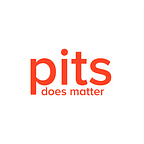RAID 1 Explained
Losing data can be a nightmare, resulting in significant setbacks and potential business disruptions. That’s where RAID 1, also known as “mirroring”, comes into play. In this blog, we will delve into the concept of RAID 1, its functionality, advantages and disadvantages, and the factors to consider when choosing this configuration.
How RAID 1 Works
A crucial feature of RAID 1 is the process of rebuilding data after a drive failure. When a drive fails, the RAID controller seamlessly switches to the remaining drives, allowing the system to continue functioning normally. The failed drive can then be replaced with a new one, which is automatically incorporated into the RAID 1 array. During the data rebuilding process, the RAID controller copies the data from the surviving drive to the new one, which can take some time depending on the drive size and data volume. While the data is being rebuilt, there may be a temporary performance degradation, resulting in slower system operation.
It is essential to note that while RAID 1 offers protection against hardware failures, it does not safeguard against other forms of data loss, such as accidental deletion or malware attacks. To mitigate these risks, it is crucial to have a comprehensive backup strategy that complements the RAID 1 setup.
Advantages
- Data Redundancy: RAID 1 excels in providing data redundancy. By writing data simultaneously to multiple drives, it ensures the availability of a backup copy even if one drive fails.
- High Reliability: This RAID level is highly reliable due to the mirroring of data on multiple drives. The risk of data loss resulting from hardware failure is significantly reduced.
- Easy Setup: RAID 1 is relatively simple to set up and configure. It does not require specialized software or hardware, allowing it to be implemented using standard hard drives and a RAID controller.
- Fast Read Performance: With data mirrored across multiple drives, RAID 1 can deliver faster read performance compared to a single drive configuration. Simultaneous data access from multiple drives enables quicker read times.
Disadvantages
- Reduced Capacity: A notable drawback of RAID 1 is the reduction in overall storage capacity. Since data is mirrored across drives, the total array capacity is limited to that of a single drive.
- Higher Cost: Implementing RAID 1 requires multiple hard drives, which can increase the overall cost of the system. Additionally, a RAID controller is necessary, further adding to the expense.
- Slower Write Performance: Writing data to multiple drives simultaneously can result in slower write performance compared to a single drive setup. RAID 1 may not match the write speed of a standalone drive.
RAID 1 is an ideal choice for environments where data availability and reliability are critical, such as servers, databases, and other mission-critical applications. Its advantages, including data redundancy, high reliability, easy setup, and fast read performance, make it a preferred choice in such scenarios. However, it’s important to consider the trade-offs, such as reduced capacity, higher cost, and potentially slower write performance. In situations where capacity and write performance take precedence over data redundancy, alternative RAID configurations may be more suitable.
Conclusion
RAID 1, with its mirroring capabilities, provides a robust solution for ensuring data redundancy and high availability. It offers several advantages in terms of data protection, reliability, ease of setup, and read performance. Nonetheless, it is essential to carefully evaluate the specific needs of your environment, considering factors like capacity requirements, budget constraints, and performance expectations before choosing RAID 1. By weighing the benefits and drawbacks, you can make an informed decision and implement the most suitable RAID configuration for your data storage needs.
See Also
- RAID 0 Explained
- RAID 1 Explained
- RAID 5 Explained
- RAID 6 Explained
- RAID 10 Explained
- RAID 50 Explained
- RAID Levels Explained
